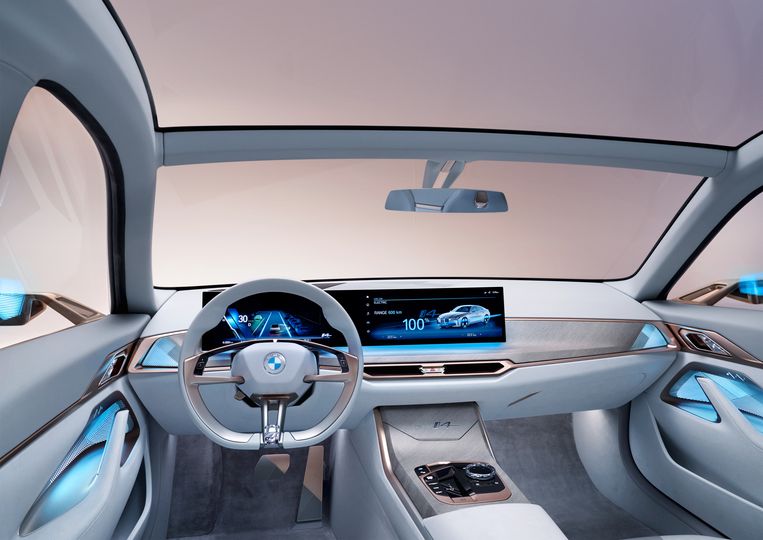Electric car owners sometimes miss the sound of the engine. This is why manufacturers make them, sometimes even by a filmmaker. How should an electronic car sound?
The sound tells you how deeply you press the accelerator: the higher the speed, the louder the sound and the faster you accelerate. Unless you’re in an electric car, you won’t hear almost anything. Some find this a blessing, others miss the “vroem sound” of pounding pistons.
For them, there are accessories for sale that turn a quiet Tesla into a dangerously noisy Lamborghini, a Chevrolet Corvette, or whatever you like. For example, Milltek Active Sound sells a kind of metal sound box with a speaker and electronic devices that you can install in the back of the car. The system can then be controlled through an app that offers dozens of audio options.
It’s a bit like a digital camera that “clicks” when you take a picture: it makes no sense, but the sound bridges the gap to the past and some users like it.
Delft noise researcher Elif Ozkan Viera understands these motorists. It is not only the sound itself, but also the association that evokes it, that guides our appreciation. Few people find the mechanical gurgling of an espresso machine unpleasant, as it reminds us of a delicious and relaxing cup of coffee. On the other hand, a softer dental drill makes many hairs stand on end. “I call it the Harley-Davidson effect,” Ozkan Vieira says. “Fans associate that motorcycle’s loud engine noise with freedom, or the taming of a wild animal. They loved it, so the manufacturer didn’t mute the sound too much on purpose.”
BMW Experience
Electric car manufacturers have been thinking about this, too, for a while. Mazda, Renault, Porsche and BMW, among others, have outfitted their plug-in hybrid/electric cars for a few years now with “engine sound” designed to fit the luxury car image.
BMW has given a lot of publicity to this with their latest model, the all-electric i4 M50 the sound The film was composed by the music composer Hans Zimmer, who created over a hundred soundtracks, including music for the king lionAnd its origins in a The Dark Knight. The audio, which the driver can turn on and off, says Andrew Mason, a spokesman for BMW Group Holland, is categorically not designed to sound like an internal combustion engine. “You have to match the BMW experience with the combustion engine, not simulate it. When you accelerate, the sound supports the thrust in the rear, and the feeling that you are going faster.”
This is correct. Select “IconicSounds” on the i4’s touchscreen and the car fills with a nice, deep sound with a second note that increases with speed. These comments sound familiar, especially in “rest mode”. However, if you choose the “Sport” option on the slope of the highway, you will feel more like a Boeing 747 taking off than a BMW. Perhaps that’s what some BMW drivers like to experience.
“You get a stronger experience when all the senses are saying the same thing,” says sound designer Emar Vegt. As a graduate student in industrial design, he joined BMW in 2009 because he realized that the acoustic design of an electric car deserved as much attention as its visual appearance. It came at the right time.
Until then, sound designers at car manufacturers had mainly focused on dampening unwanted mechanical noise. A new era has dawned with the arrival of the quieter electric option. “My boss believed in that,” Vigt says. He said: We cannot distinguish ourselves by silence, but by sound we can.
Balance between the modern and the familiar
Wigt has been with BMW for seven years and is partly responsible for the sound of the BMW i3 and i8. It shows that BMW should look modern, futuristic and powerful. So the fake sound of a combustion engine is out of the question. At the same time, the sound should not be cold and discrete. “People like sounds that have a certain nature and believability. In practice, such sounds often have a frequency range close to the human voice. Our ears are in tune with that. The challenge is to strike this balance between the modern and the familiar.”
Aside from the emotional experience, according to Vegt, the feedback also provides additional safety: everyone who hears that the car is accelerating, is more aware of this and is less likely to accidentally drive too fast. Whether this actually applies in practice has not been thoroughly investigated.
The fact that all electric cars make noise from the outside when they are driven at a fast pace is in any case due to safety considerations. Since 2019 He writes A European law for electric vehicles must also be audible to cyclists and pedestrians when driving at a distance of up to 20 kilometers per hour. At this speed, electric cars make so little noise that hearing-impaired road users wouldn’t notice it otherwise.
Ozcan Vieira has a comment about it. Although it is of course important that cyclists and pedestrians not end up under the wheels of very quiet electric cars, the effect of this measure has not been studied much. “We often act out of fear in situations like this,” she says. “To my knowledge, not many analog simulations have been performed, although this is indeed necessary to know which sound is desirable and which is undesirable. Noise pollution is a major cause of stress in Europe. In this context, I would always recommend against adding ‘voice for sound’ Just. ”

“Total coffee specialist. Hardcore reader. Incurable music scholar. Web guru. Freelance troublemaker. Problem solver. Travel trailblazer.”







More Stories
Bitcoin price rises after new jobs data from US
European stock markets open higher | beursduivel.be
Russia’s oil imports to China decline